The Xiaomi Mi Smart Speaker Battery Edition, released officially on November 1st, is a small, low-cost entry in the wireless speaker market in China. It has one 2.5-inch 12W speaker and a streaming light display with “16 million colors,” according to Xiaomi. Tuned by DTS (Digital Theater Systems, a competitor to Dolby Labs), the device is 15.1 centimeters high (5.94 inches), 13.1 centimeters long (5.15 inches), and 10.4 centimeters wide (4.09 inches). It’s also relatively light at 853 grams (1 lb 14 oz).
We put the Xiaomi Mi Smart Speaker Battery Edition through our rigorous DXOMARK Speaker test suite to measure its performance at playing audio back through its built-in speaker. In this review, we will break down how it fared in a variety of tests and several common use cases.
Key specifications include:
- Mono
- Speakers: One 12W speaker
- Supported OS: Android 4.4 and iOS 9.0
- Supported audio formats: HE-AAC, LC-AAC
- Bluetooth: 4.2, support, A2DP music playback
- Speaker position: Front-firing
- Dimensions: 13.1 centimeters long (5.15 inches), 10.4 centimeters wide (4.09 inches), 15.1 centimeters high (5.94 inches); 9.62 cm (3.79 inches) diameter
- Wireless connection: 2.4 GHz / 5 GHz, support IEEE 802.11 a/b/g/n/ac protocol)
- Language: Supports Mandarin only
Test conditions:
- Tested with smartphone: Motorola G8
- Tested with: Xiaomi Mi TV Box S
- Communication protocol: Bluetooth
- Firmware version: 1.44.3
About DXOMARK Wireless Speaker tests: For scoring and analysis in our wireless speaker reviews, DXOMARK engineers perform a variety of objective tests and undertake more than 20 hours of perceptual evaluation under controlled lab conditions. This article highlights the most important results of our testing. Note that we evaluate playback using only the device’s built-in hardware. (For more details about our Speaker protocol, click here.) The Xiaomi Mi Smart Speaker Battery Edition falls into the Essential category of devices in the DXOMARK Speaker rankings.
Test summary
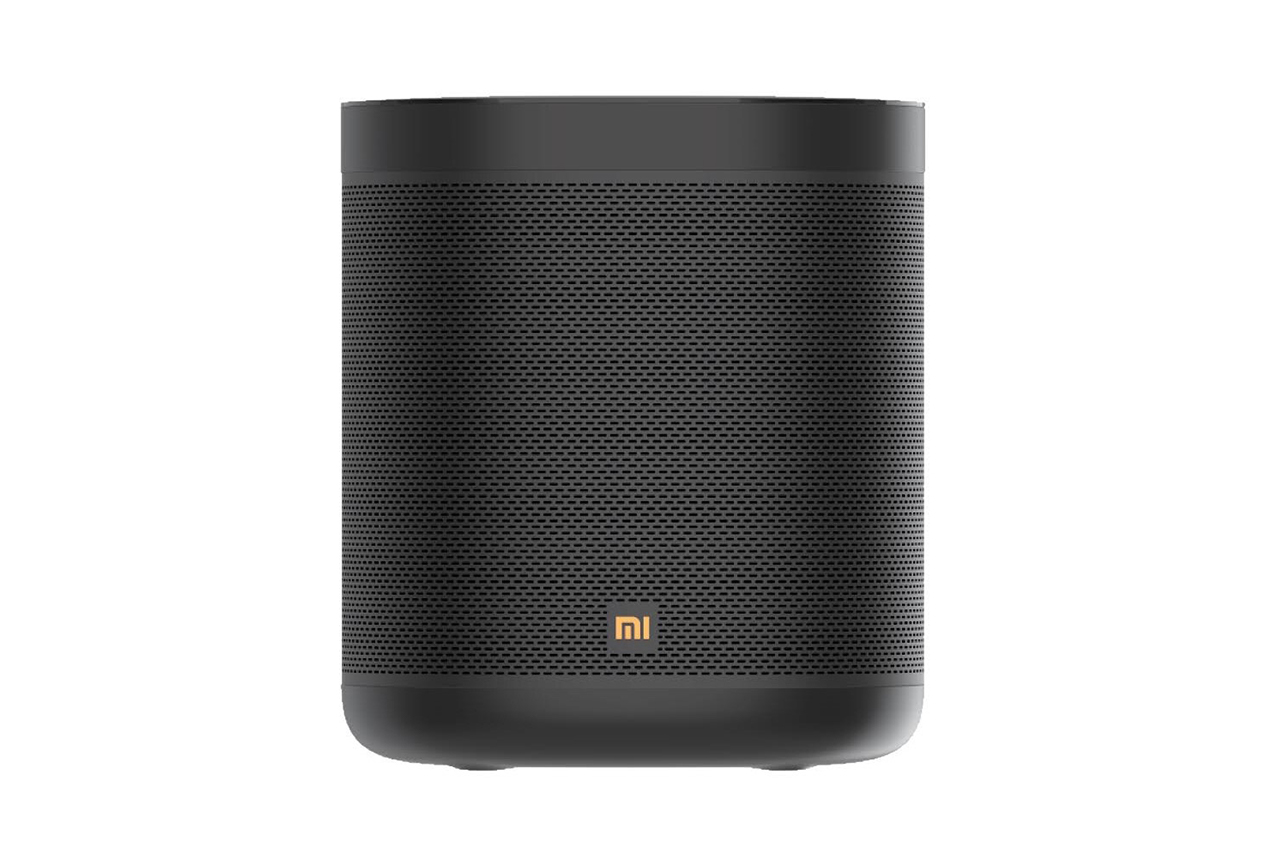 Xiaomi Mi Smart Speaker Battery Edition
Xiaomi Mi Smart Speaker Battery Edition


Considering the price of the Xiaomi Mi Smart Speaker Battery Edition, its score of 104 among the “Essential” segment of speakers (costing less than 200 euros) is rather remarkable. It came in third place among the first six devices we’ve tested that category, bested by only the Amazon Echo Studio in the top spot at 124 and the Xiaomi XiaoAI Speaker HD, its more expensive sister device, at 109.
The device is strongest in the midrange, with good attack performance for midrange instruments in every use case. It also has surprisingly good localizability, thanks to those precise upper mids. Whether it’s plugged in or on battery, the tonal balance and volume of the Xiaomi Mi Smart Speaker were the same. The limitations of the device show up outside the midrange: tonal balance lacks low-end extension in every use case. At maximum volume, harsh trebles impair the tonal balance. Because this is a mono device with one front-firing speaker, it scored 0 for wideness (no stereo effect whatsoever), and directivity is limited. At loud and maximum volumes, there is strong compression and pumping artifacts. Finally, a noticeable time lag means it’s not ideal as a tool for streaming sound from movies or video.
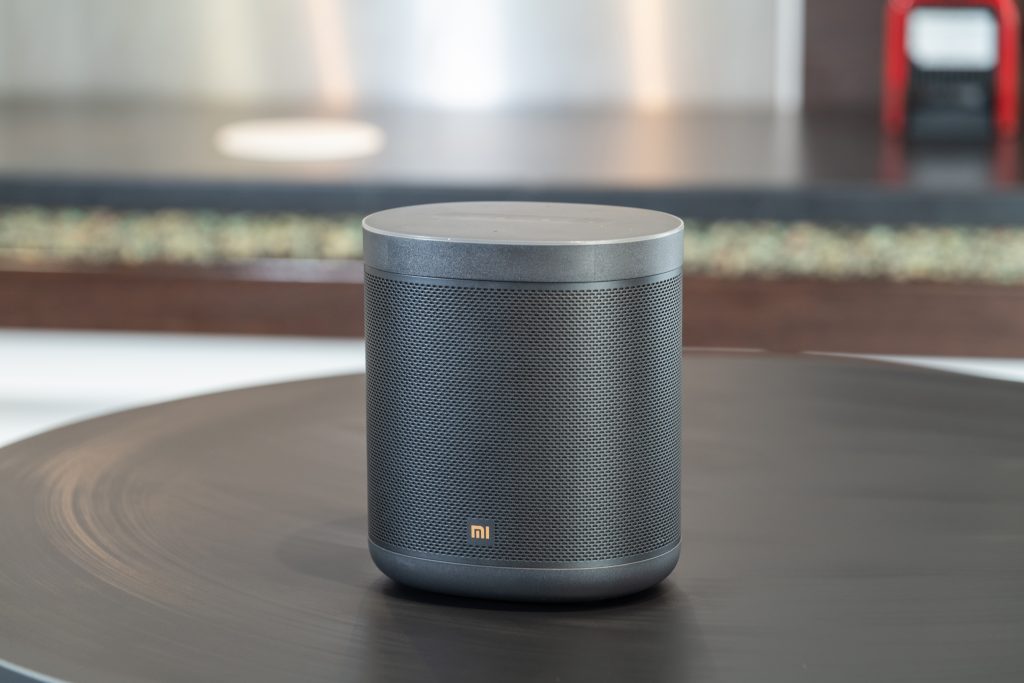
Sub-scores explained
The DXOMARK Speaker overall score of 104 for the Xiaomi Mi Smart Speaker Battery Edition is derived from a range of sub-scores. In this section, we will take a closer look at these audio quality sub-scores and explain what they mean for the user, and we will show some comparison data from two of the battery-operated Mi Smart Speaker’s principal competitors in the Essential category, the Amazon Echo Studio and the Yandex Station.

Timbre
Xiaomi Mi Smart Speaker Battery Edition
152
DXOMARK timbre tests measure how well a speaker reproduces sound across the audible tonal range and takes into account bass, midrange, treble, tonal balance, and volume dependency.
The Xiaomi Mi Smart Speaker Battery Edition overall performs well for timbre, especially considering its limitations. It performs best at lower volumes (quiet to nominal), where its good midrange qualities can shine through. A slight lack of low-mids can result in a nasal tonal balance in certain use cases such as bedtime and relaxing.
Tonal balance lacks low-end extension in most use cases and is too midrange-focused. At loud volume, harsh high-mids lead to aggressive-sounding voices, and the lack of bass is even more significant.


Dynamics
Xiaomi Mi Smart Speaker Battery Edition
137
Our dynamics tests measure how well a device reproduces the energy level of a sound source, taking into account attack, bass precision, and punch.
The device has an average score for dynamics. Attack is hindered by a slight lack of high-end extension on high-pitched instruments, such as the hi-hats in a drum kit, which are not very sharp as a result. Instruments with more midrange prominence, such as piano and snare drums, however, show a more precise attack. The lack of low-mids, especially the lack of bass, affects punch. Bass precision suffers from the same issues, even if the upper range of bass is quite precise at lower volumes. In the party use case (loud and maximum volume), huge compression and pumping effects really drag down the dynamics performance.
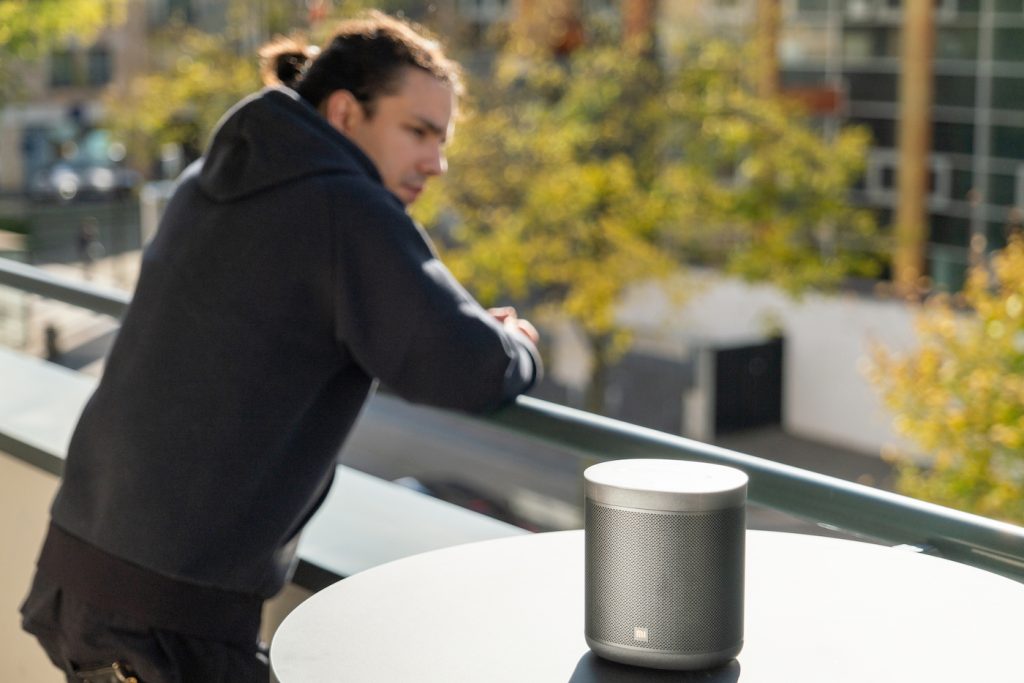

Spatial
Xiaomi Mi Smart Speaker Battery Edition
111
Our Spatial tests measure a speaker’s capability to reproduce stereo sound in all directions, taking into account localizability, balance, wideness, distance, and directivity.
Mono with one front-firing speaker, the Xiaomi Mi Smart Speaker Battery Edition has some big limitations when it comes to the Spatial attribute. It has zero wideness (no stereo effect), and directivity is quite poor. Sound is not consistent around the speaker. Localizability, on the other hand, is quite good, enhanced by accurate high-mids from quiet to nominal volume levels. The lack of low-mids hinders distance rendering, affecting the feeling of proximity with low voices. Good high-mids clarity results in a nice presence for high-pitched voices.
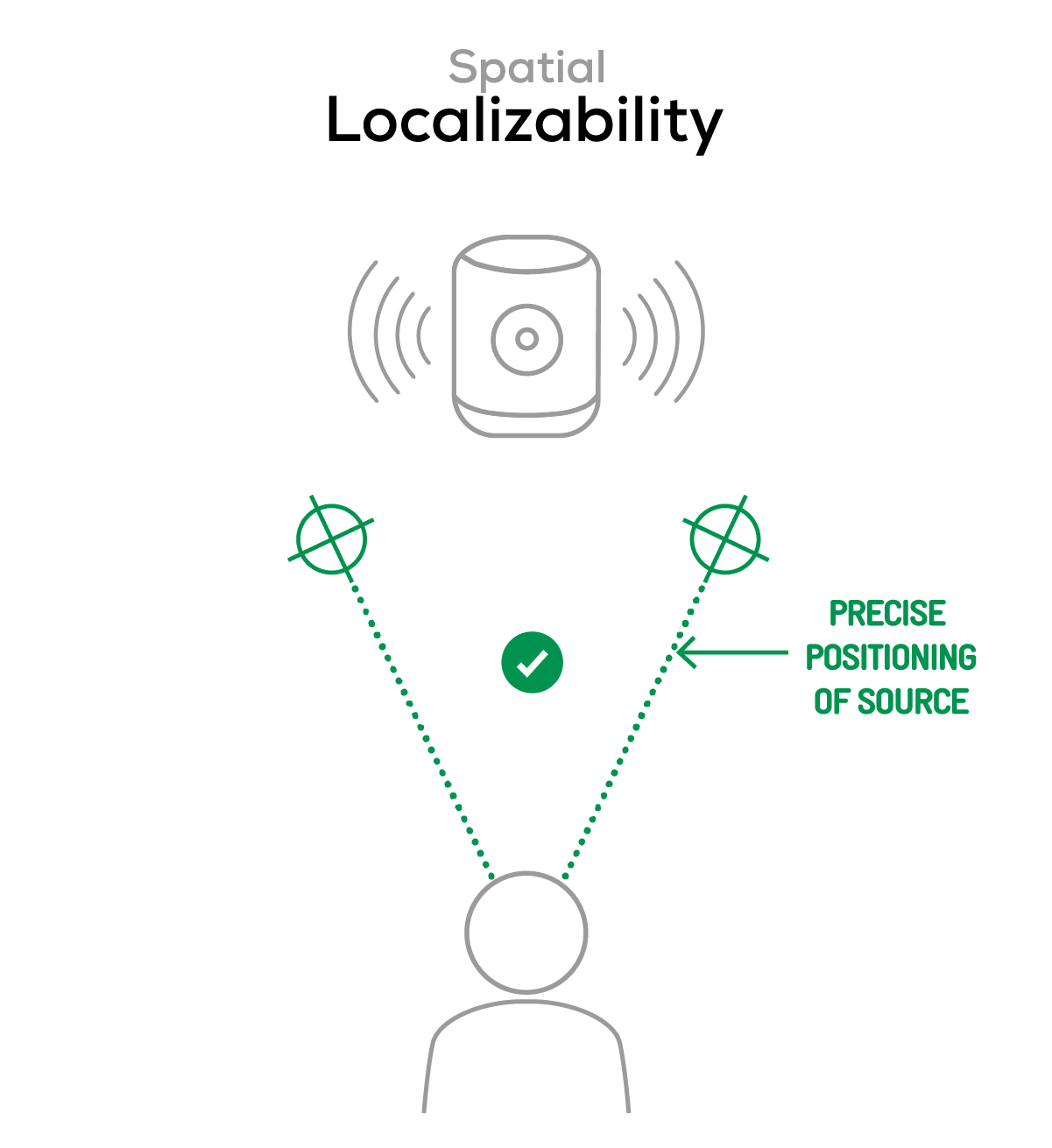
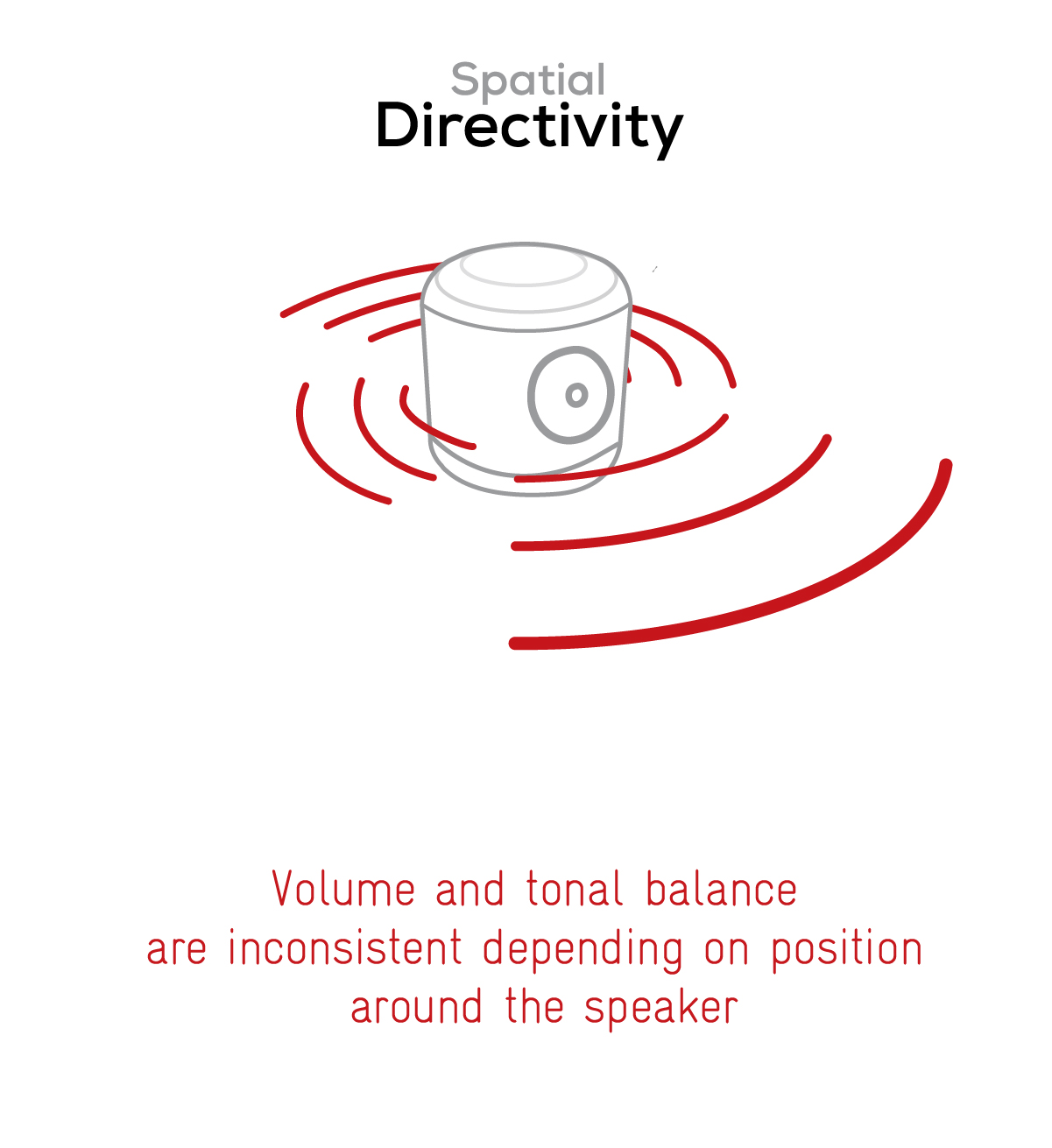
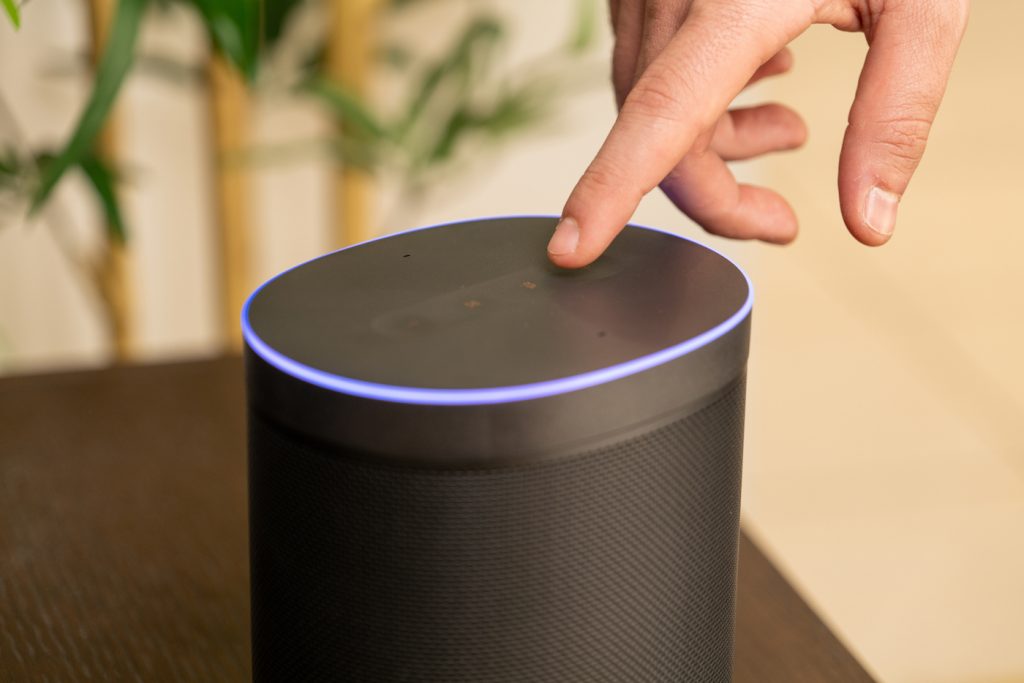

Volume
Xiaomi Mi Smart Speaker Battery Edition
141
Our volume tests measure both the maximum loudness a speaker is able to produce and how smoothly volume increases and decreases based on user input.
Even taking into account its compact size, the Xiaomi Mi Smart Speaker Battery Edition is not as loud as many comparable devices. In the party use case, it’s simply not loud enough to do the job. When watching a movie or video, the volume has to be turned up quite loud to let the listener understand the dialogue.
The Xiaomi Mi Smart Speaker maximum volume is too low compared with other devices in its class. Here are sound pressure levels we measured when playing our sample recordings of hip-hop and classical music at maximum volume:
| Correlated Pink Noise | Uncorrelated Pink Noise | Hip-Hop | Classical | Latin | Asian Pop | |
| Xiaomi Mi Smart Speaker Battery Edition | 78.9 dBA | 78.4 dBA | 73.5 dBA | 70.2 dBA | 74.9 dBA | 66.8 dBA |
| Amazon Echo Studio | 84.8 dBA | 79.6 dBA | 81.1 dBA | 72.2 dBA | 80.7 dBA | 75.6 dBA |
| Yandex Station | 91.7 dBA | 89 dBA | 86.7 dBA | 79.4 dBA | 89.2 dBA | 80.2 dBA |

Artifacts
Xiaomi Mi Smart Speaker Battery Edition
133
Our artifacts tests measure how much source audio is distorted when played back, along with such other sound artifacts as noise, pumping effects, and clipping. Distortion and other artifacts can occur both because of sound processing and because of the quality of the speakers.
The Xiaomi Mi Smart Speaker Battery Edition received our second-highest score in its segment for artifacts, outdone only by the top-rated Amazon Echo Studio.
There is some slight bass distortion on low-end content, especially in the electronic music use case. The time lag from Bluetooth is significant, meaning dialogue and other sounds in movies and videos will be slightly out of sync.
Conclusion
The Xiaomi Mi Smart Speaker Battery Edition does very well within the limitations inherent in its design. With only one front-firing speaker, it produces a good enough performance to secure third place in our first grouping of six < 200€ wireless speakers, and that in itself is impressive. Its strengths lie in the midrange and at lower volumes, where its flaws are not as noticeable. It has a good attack performance on midrange instruments (such as piano) in every use case, and surprisingly good localizability, thanks to those precise upper mids. A lack of bass and low-end extension hurt tonal balance, especially at higher volumes. Further, artifacts like pumping and compression become an issue at higher volumes.
Pros
- Good sound performance considering the speaker’s design limitations
- Regardless of the power source, tonal balance and overall volume performance remain consistent.
- Great localizability of sound sources, thanks to the speaker’s upper mids accuracy.
Cons
- Low-end extension is lacking in every use case.
- Audio/video time lag inhibits use when watching movies or videos.
- Maximum volume is too low compared with other devices in the Essential segment.
- At its loudest volumes, the speaker exhibits excessive compression and aggressive high-mids.


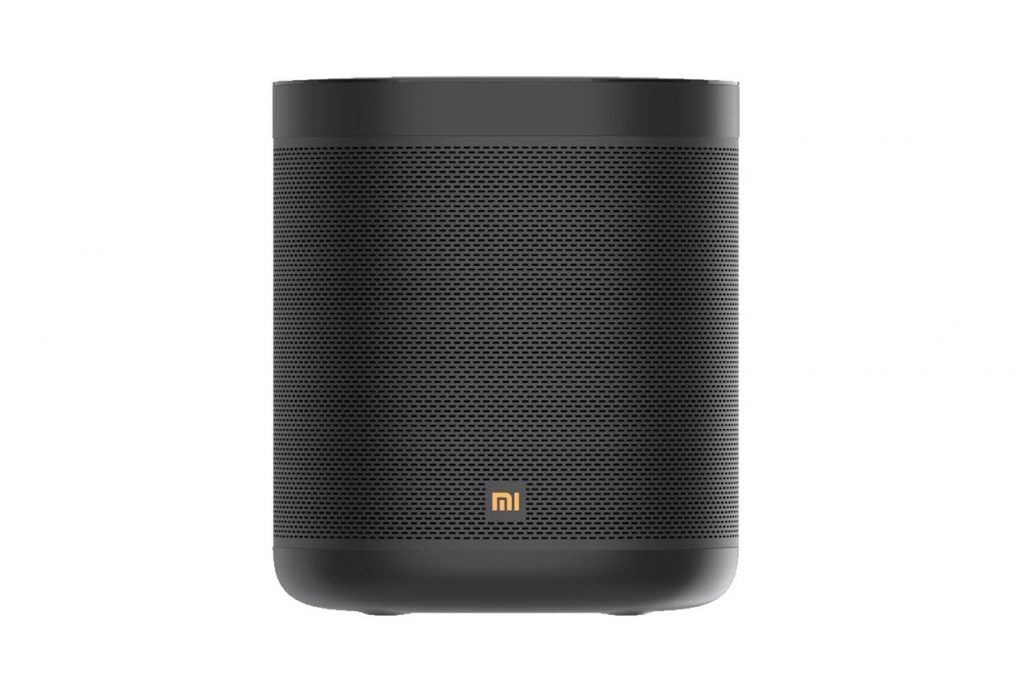
DXOMARK encourages its readers to share comments on the articles. To read or post comments, Disqus cookies are required. Change your Cookies Preferences and read more about our Comment Policy.